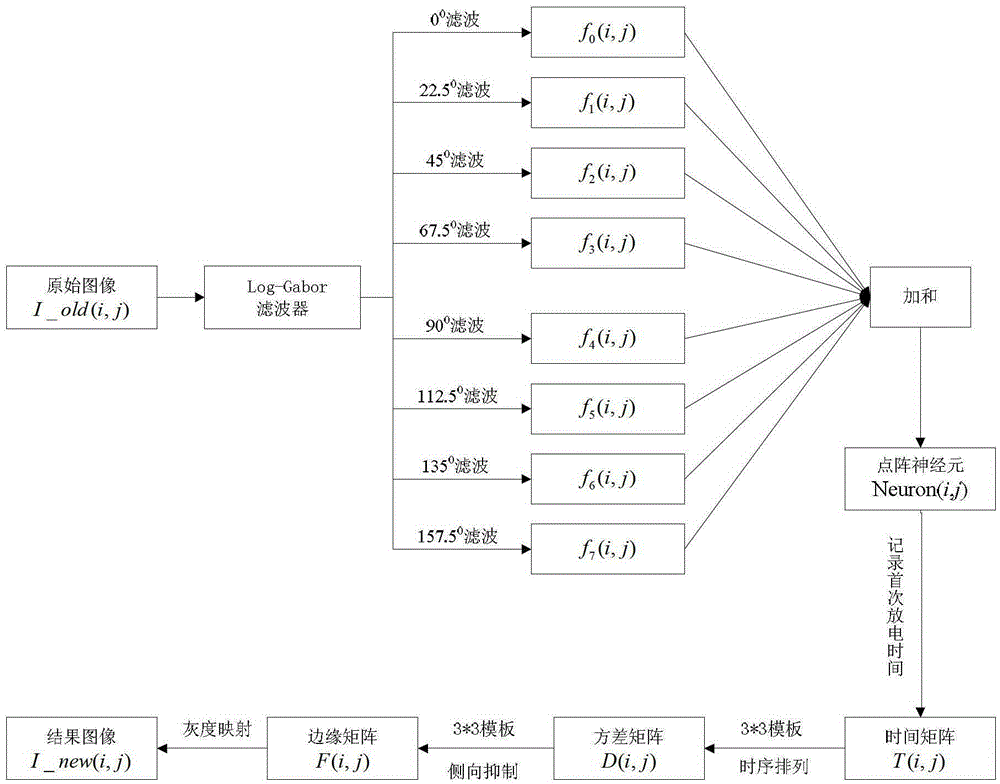Image Strong and Weak Edge Detection Method Based on Lattice Neuron Response Spatial-Temporal Information
An edge detection and neuron technology, applied in the field of image processing, can solve the problems of image over-segmentation, loss of weak details, etc., to achieve the effect of satisfying subjective evaluation
- Summary
- Abstract
- Description
- Claims
- Application Information
AI Technical Summary
Problems solved by technology
Method used
Image
Examples
Embodiment Construction
[0018] The following is attached figure 1 The present invention is described further, in figure 1 Where I_old(i,j) represents the original input image; f k (i,j)(k=0,1,...,7) is the Log-Gabor filter with angle θ i (θ i =22.5 0 *i,i=0,1,...,7) filtered results; Neuron(i,j) indicates the lattice neuron used; T(i,j) indicates the first time recorded after the lattice neuron model The time matrix of discharge time; D(i,j) represents the variance matrix after variance processing; F(i,j) represents the edge matrix after neuron lateral inhibition; I_new(i,j) represents the final result image .
[0019] The concrete steps of the inventive method are:
[0020] Step (1) makes the original image I_old(i,j) (i=1,2,...,M;j=1,2,...,N) preprocessed by the Log-Gabor filter to obtain The angle is θ i (θ i =22.5 0 *i,i=0,1,...,7) results in 8 directions, denoted as f k (i,j)(k=0,1,...,7). Then use formula (1) to reconstruct the edge information of the image:
[0021] ...
PUM
 Login to View More
Login to View More Abstract
Description
Claims
Application Information
 Login to View More
Login to View More - R&D
- Intellectual Property
- Life Sciences
- Materials
- Tech Scout
- Unparalleled Data Quality
- Higher Quality Content
- 60% Fewer Hallucinations
Browse by: Latest US Patents, China's latest patents, Technical Efficacy Thesaurus, Application Domain, Technology Topic, Popular Technical Reports.
© 2025 PatSnap. All rights reserved.Legal|Privacy policy|Modern Slavery Act Transparency Statement|Sitemap|About US| Contact US: help@patsnap.com



